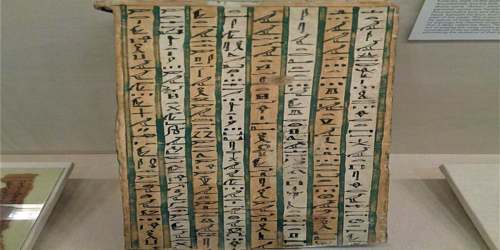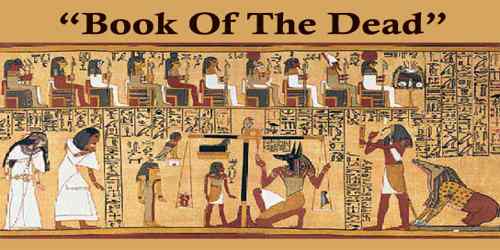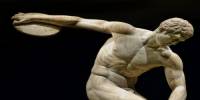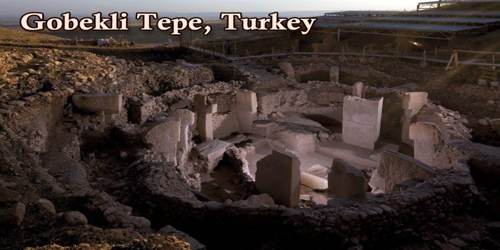The “Book of the Dead” is an ancient Egyptian funerary text generally written on papyrus and used from the beginning of the New Kingdom (around 1550 BCE) to around 50 BCE. It is actually the nickname of different magical spells, charms, numbers, passwords, and formulas written down by the ancient Egyptians in different ways. The name, “Book of the Dead” was given by the German Egyptologist Karl Richard Lepsius, who had published some selected texts in 1842. The original Egyptian name for the text, transliterated rw nw prt m hrw, is translated as Book of Coming Forth by Day or Book of Emerging Forth into the Light. “Book” is the closest term to describe the loose collection of texts consisting of a number of magic spells intended to assist a dead person’s journey through the Duat, or underworld, and into the afterlife and written by many priests over a period of about 1000 years.
The “Book of the Dead” is a series of rites, prayers, and myths containing the Egyptian beliefs about the afterlife. The origin of this group of beliefs is very old, and they appear for the first time inscribed in the pyramids. Some of these ancient books have come down to us, though not in their complete form. Early funeral rites and spells were inscribed in pyramids. The first texts of this type were those written in the funerary chamber of the Pharaoh Unis. On the walls of this chamber, it’s possible to see hieroglyphs containing sentences and explanations to help the Pharaoh come back to life. Unfortunately, these phrases are written using very infrequent hieroglyphs. For this reason, they have not all been clearly deciphered.
Probably compiled and reedited during the 16th century BCE, the collection included Coffin Texts dating from c. 2000 BCE, Pyramid Texts dating from c. 2400 BCE, and other writings. Later compilations included hymns to Re, the sun god. Numerous authors, compilers, and sources contributed to the work. Scribes copied the texts on rolls of papyrus, often colorfully illustrated, and sold them to individuals for burial use. Many copies of the book have been found in Egyptian tombs, but none contains all of the approximately 200 known chapters. The collection, literally titled “The Chapters of Coming-Forth-by-Day,” received its present name from Karl Richard Lepsius, the German Egyptologist who published the first collection of the texts in 1842.
Most of these magical spells were written to help the Egyptians reach safely to their afterlife. Almost 200 spells had been discovered so far and most of them were written in a piece of papyrus whereas some were written on the wall of tombs too. Initially, those texts were written on the exterior of the deceased person’s sarcophagus, but later they were written on papyrus sheets. The ancient Egyptians were very religious and their religious beliefs were based on the polytheism (worship of many deities). There were two chief deities of the Egyptians namely Aman-Ra (The Sun God and the God of the Universe) and God Orisis (the God of the underworld who could possibly make a peaceful after life). The ancient Egyptian religion gave stress on the life after death. It was believed that the life after death would take people to a particular state which could be achieved by the help of some magical spells.
The best preserved and most complete ‘Book of the Dead’ is the ‘Papyrus of Ani’. It contains many chapters and a large number of drawings that explain step-by-step what happens to the soul when it leaves the body. It’s a very large papyrus. Unrolled, it measures more than 26 meters.
Wealthy Egyptians used to hire scribes who could write down their all personal favorites on the papyrus sheets which were then stored watchfully in their tombs. People who were not that rich used to purchase a ready-made versions of the Book of the dead which used to contain some most popular spells. There was a place on the papyrus sheet where people could write their own names as well. According to the Egyptian belief, Ba and Ka, two pieces of soul, find their ways to own tomb each night.

Egyptian Book of the Dead, painted on a coffin fragment (c. 747 – 656 BCE)
The “Book of the Dead” has about 200 chapters and is generally organized into four sections:
- Chapters 1-16 describe how the deceased enters the Duat, where the mummified body begins to move and speak.
- Chapters 17-63 offer explanations of Egyptian myths and the deceased returns completely to life.
- Chapters 64-129 describe how the deceased travels the sky in the solar barge; at sunset, he goes before Osiris (the god of the afterlife) to be tried.
- Chapters 130-189 explain that if the judgment has been favorable, the deceased enters Heaven with the other gods.
The “Book of The Dead” mainly contains the pictures of tests through which the deceased person would have to pass. The most important test was to take a weight of the dead person’s heart against the Ma’at (Truth), a feather and sin.
Research work on the “Book of the Dead” has always posed technical difficulties thanks to the need to copy very long hieroglyphic texts. Initially, these were copied out by hand, with the assistance either of tracing paper or a camera lucida. In the mid-19th century, hieroglyphic fonts became available and made lithographic reproduction of manuscripts more feasible.
In the present day, hieroglyphics can be rendered in desktop publishing software and this, combined with digital print technology, means that the costs of publishing a “Book of the Dead” may be considerably reduced. However, a very large amount of source material in museums around the world remains unpublished.
Information Source:
















